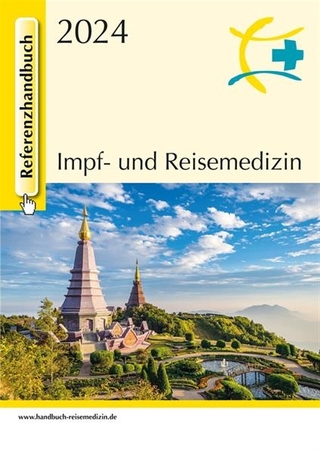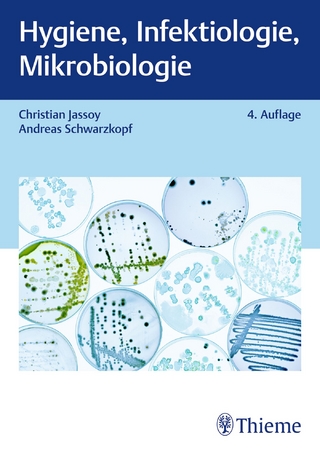
Viral Fitness and Evolution
Springer International Publishing (Verlag)
978-3-031-15642-7 (ISBN)
This book unifies general concepts of plant and animal virus evolution and covers a broad range of topics related to theoretical and experimental aspects of virus population dynamics and viral fitness.
Timely topics such as viral mechanisms to cope with antiviral agents, the adaptability of the virus to new hosts, emergence of new viral phenotypes, and the connections between short- and long-term virus evolution are included.
By comparing plant and animal viruses, universal mechanisms responsible for fitness variations, viral emergence and disease mechanisms are explored.
Although emphasis is put on specific plant and human viral pathogens, relevant similarities and differences to other viruses are highlighted. Additionally, readers will learn more about the adaptability of coronaviruses, including the recently emerged SARS-CoV-2, the causative agent of the COVID-19 pandemic.
The book is aimed at students and scientists interested in basic and applied aspectsof plant and animal virus population dynamics and evolution.
Esteban Domingo [B.Sc. in Chemistry (1965), Ph.D. in Biochemistry (1969) from the University of Barcelona, Spain] did postdoctoral work at the UC Irvine, with Robert C. Warner (1969-1973), and at the University of Zürich, with Charles Weissmann (1974-1977). This work permitted the calculation of a mutation rate and the first evidence of quasispecies for an RNA virus. He was visiting Professor at the UC San Diego with John J. Holland (1989-1990), and they provided the first evidence of lethal mutagenesis of RNA viruses. He is Emeritus Professor of Research (CSIC) at Centro de Biología Molecular Severo Ochoa in Madrid. He has received several awards, including the degree of Doctor honoris causa from the Universities of Liège (Belgium) (1999), and Bern (Switzerland) (2004). He is a member of EMBO, the European Academy, Vice-President of the Royal Academy of Sciences of Spain, and in 2020 he was elected Foreign Associate of the US National Academy of Sciences. Peter Schuster, born 1941 in Vienna, Austria, studied Chemistry at the University of Vienna and got his PhD in 1967. He was Postdoctoral Fellow at the Max-Planck-Institute for Biophysical Chemistry, Göttingen, Germany, and then Full Professor of Theoretical Chemistry, University of Vienna, 1973-2009. Since 2009 he is Professor emeritus. He was External Faculty Member of the Santa Fe Institute, Santa Fe NM, USA, 1991-2020 and Founding Director of the Institute of Molecular Biotechnology, Jena, Germany, 1991-1995. Among other academic memberships he is Fellow of the Austrian Academy of Sciences since 1984, and was Vice President 2000-2003 and President 2006-2009. He is Fellow of the Deutsche Akademie der Naturforscher Leopoldina, Foreign Associate of the National Academy of Sciences, USA, Fellow of the Academia Europaea London and Member of the European Molecular Biology Organization (EMBO). Peter Schuster’s scientific works deal with the theory of intermolecular forces. Together with Manfred Eigen he developed a theory of evolution merging chemical reaction kinetics with molecular biology and leading to new concepts such as molecular quasispecies and catalytic hypercycles. He conceived a new theory of phenotype evolution on landscapes and applied it to RNA populations in test-tube experiments and viral communities. Santiago Elena is CSIC professor and co-chairman of the Institute for Integrative Systems Biology (I2SysBio), where he is the head of the Evolutionary and Systems Virology group. In addition, he is an external professor at the Santa Fe Institute (NM, USA). He graduated in Biochemistry and did a PhD thesis on Evolutionary Genetics of RNA viruses at the University of Valencia. His work has always focused on the study of the mechanisms by which RNA viruses adapt to their hosts and how this adaptation results in the manipulation of cellular resources for their own benefit. For this work, he combines experimental evolution, molecular biology and omics, molecular epidemiology, and mathematical modeling. Among other merits, he is an elected member of the European Organization for Molecular Biology (EMBO), the Chinese Academy of Agronomic Sciences (CAAS), and the American Academy of Arts and Sciences (AAA&S). Celia Perales is Staff Scientist at the Centro Nacional de Biotecnología (CNB-CSIC) and associated researcher at the Fundación Jiménez Díaz in Madrid. She graduated in Chemistry, specialized in Molecular Biology and Biochemistry and did her PhD thesis studying several aspects of the human immunodeficiency virus translation. She has worked during the last 15 years on evolution of RNA viruses and on the molecular mechanisms involved in virus extinction through antiviral treatments including lethal mutagenesis. Her expertise in molecular and clinical virology and the application of ultra-deep sequencing analysis has contributed to the understanding of viral dynamics and the response to inhibitors of hepatitis C virus both in cell culture and in clinical settings, and now applied to other RNA viruses. She is a Member of the Spanish Society of Biochemistry and Molecular Biology, the Spanish Society of Virology, and the Center for Biomedical Research Network on Liver and Digestive Diseases.
Theoretical analysis of the evolution of viral populations in sequence space, and empirical fitness landscapes.- Self-organized maps to derive fitness landscapes from deep sequencing data.- Mutations to overcome viral resistance in plants.- The role of recombination in the generation of new begomovirus phenotypes.- Plant virus adaptation to new hosts.- Viral fitness, host interactions, and resistance to antiviral agents.- Viral fitness and evolution of hepatitis C virus.- Population dynamics and fitness variations of hemorrhagic RNA viruses.- Coronavirus genome sequences, variation, and disease implications.- Epilogue: viral populations from a theoretical and experimental perspective.
| Erscheinungsdatum | 06.01.2024 |
|---|---|
| Reihe/Serie | Current Topics in Microbiology and Immunology |
| Zusatzinfo | X, 344 p. 80 illus., 74 illus. in color. |
| Verlagsort | Cham |
| Sprache | englisch |
| Maße | 155 x 235 mm |
| Gewicht | 603 g |
| Themenwelt | Medizin / Pharmazie ► Medizinische Fachgebiete ► Mikrobiologie / Infektologie / Reisemedizin |
| Naturwissenschaften ► Biologie ► Evolution | |
| Naturwissenschaften ► Biologie ► Genetik / Molekularbiologie | |
| Naturwissenschaften ► Biologie ► Mikrobiologie / Immunologie | |
| Schlagworte | Begomovirus • coronaviruses • Genomic mutation • Hemorrhagic RNA viruses • Host adaptation • Pathogen emergence • Plant and animal viruses • quasispecies • Viral infections • virus-host interactions |
| ISBN-10 | 3-031-15642-0 / 3031156420 |
| ISBN-13 | 978-3-031-15642-7 / 9783031156427 |
| Zustand | Neuware |
| Haben Sie eine Frage zum Produkt? |
aus dem Bereich


